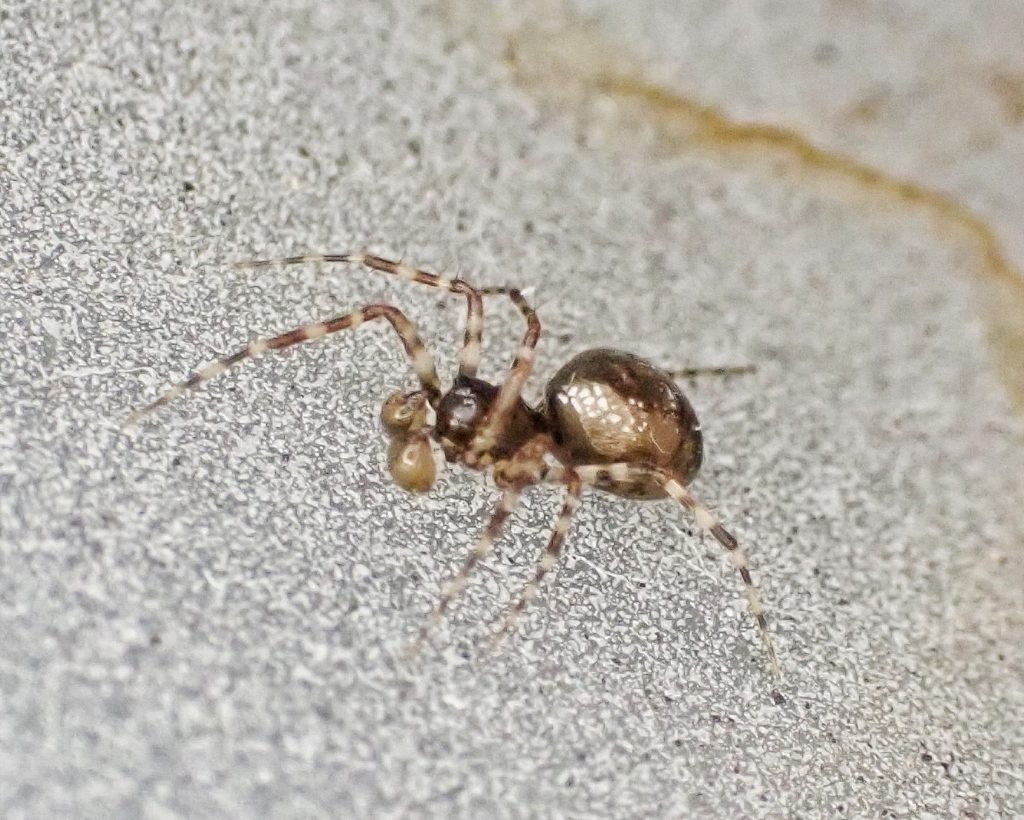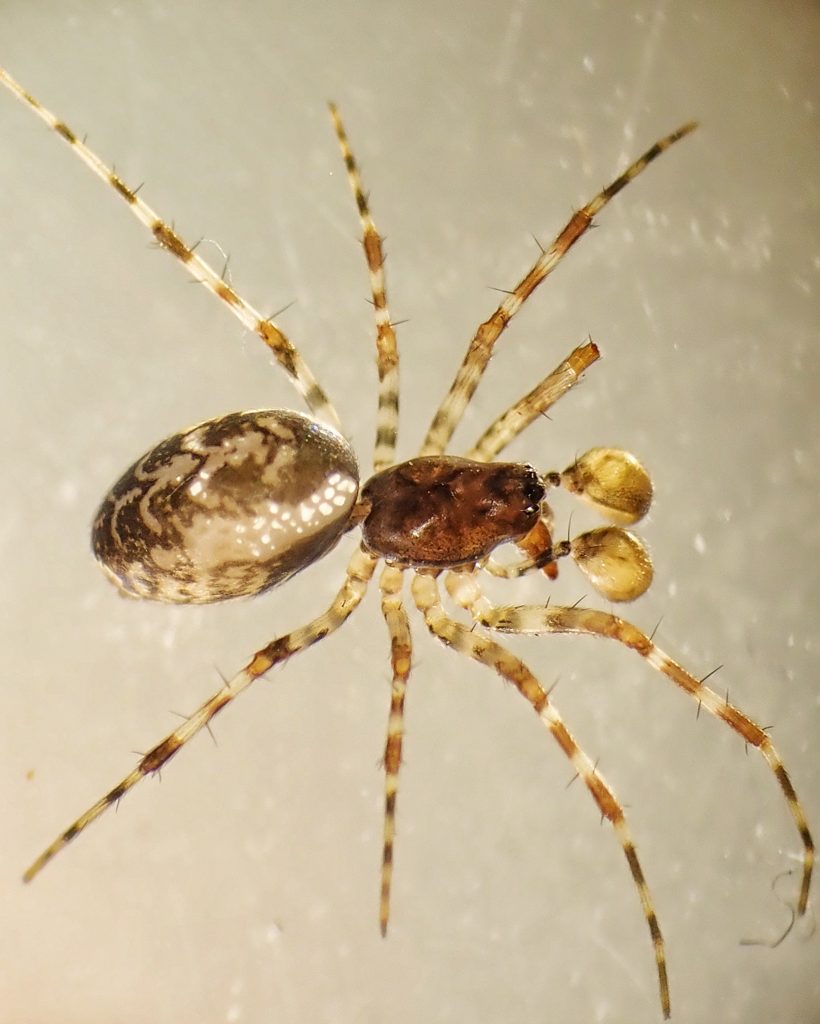
During my first spider hunting excursion 10 days ago I found a little spider that I thought was one of the trash-line spiders (genus Cyclosa) but I was informed by Rod Crawford that it was instead an immature male Neriene digna, which is a member of the family Linyphiidae. Since N. digna is said to be relatively common, that specimen had a rather distinct reticulated pattern on the abdominal margins, I routinely see Neriene litigiosa (Sierra Dome Spider) which occupies similar habitat, and there are only 3 Neriene spp. in our region, I resolved to keep an eye out for some mature specimens. And exactly a week later I found several of them, in varying stages of maturity, out at Cape Horn on the Washington side of the Columbia River Gorge. Now I just need to find N. radiata!
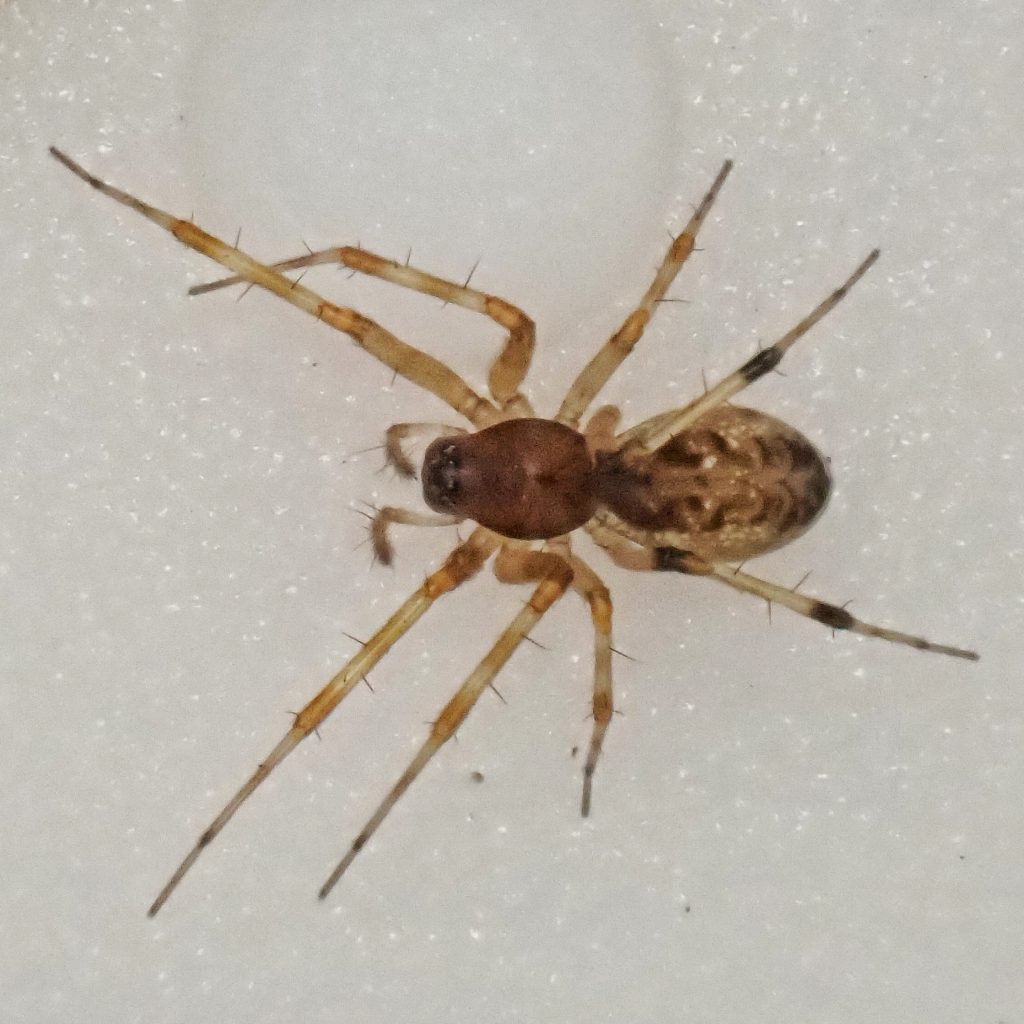
My spider mentor Rod Crawford says “The species makes a two-level sheet web, a hammock-like sheet above and a smaller, possibly protective (of the spider) sheet below; as in all linyphiids, the spider hangs on the underside of the main sheet. The web is superficially like the “bowl-and-doily spider” Frontinella, which doesn’t occur west of the Cascades. N. digna has no common name, though it’s a very common spider. Linyphiid webs have no known sticky silk but work mechanically; the tangle above the sheet knocks prey down onto the sheet. See my image of a web here: https://crawford.tardigrade.net/journal/album7514.html third row, right.”
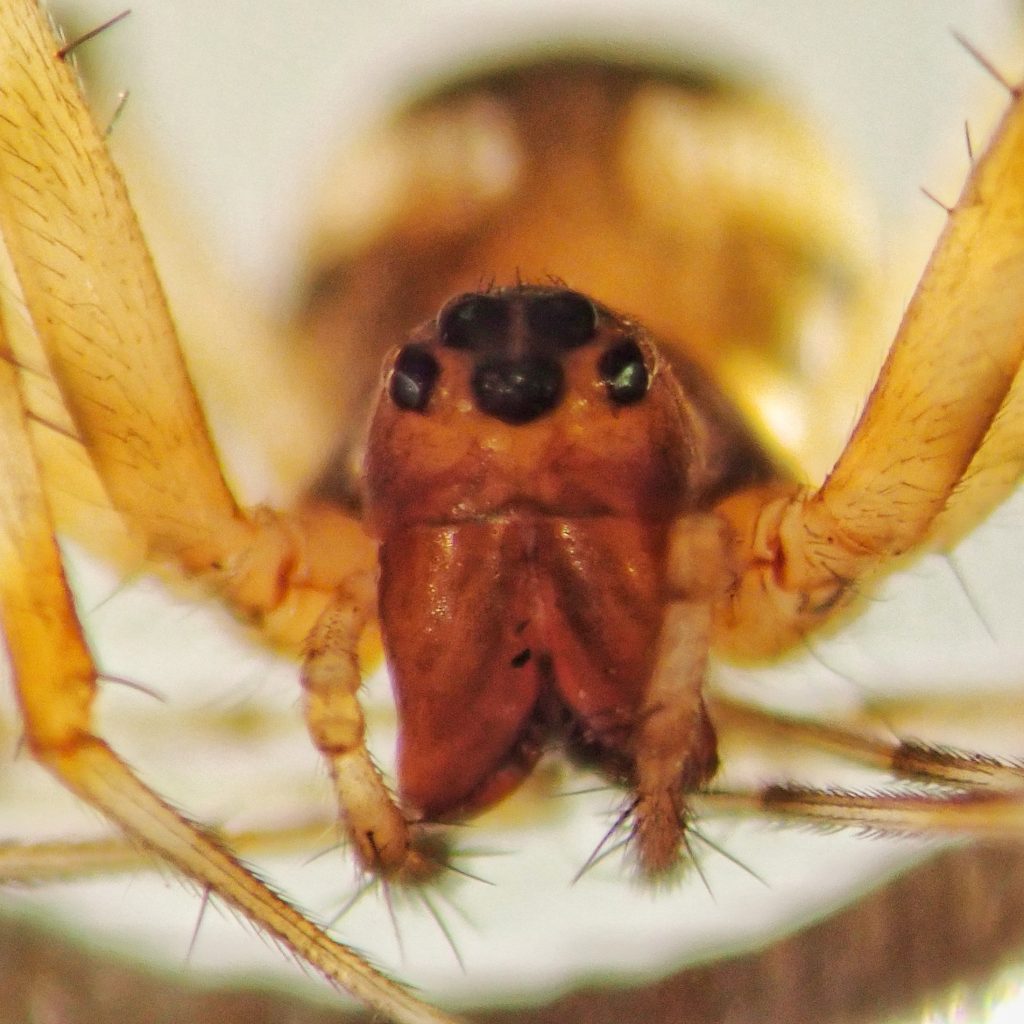
Description– Small (3.8-5.2mm) mostly dark brown to red spider with white dots or netlike white markings on the lateral parts of the abdomen; legs are about the length of the body, and banded; mature males have very large genital bulbs at the end of their pedipalps, and the mature females have a “protruding epigynum that is the giveaway – not seen in either of the 2 other species found in the region. The dorsal and ventral abdomen coloration (in combination, not either separately) are also pretty characteristic.Rod Crawford.” Species Neriene digna – BugGuide.Net
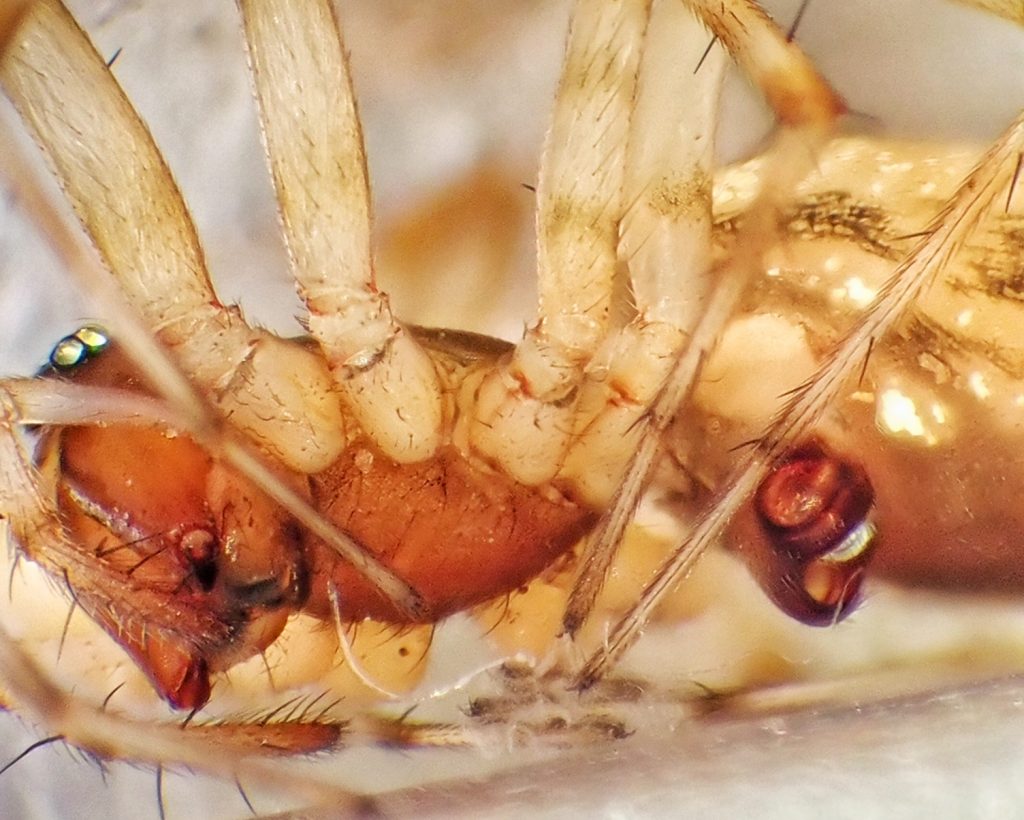
Similar species– Neriene litigiosa (Sierra Dome Spider) is larger, with longer legs and a mostly white dorsal abdomen with a dark cross, and builds a distinctive domed web; Neriene radiata also builds a dome shaped web, although it is more steeply pitched than that of Neriene litigosa, the ventral abdomen is black, there is a wide, dark, broken mark in the middle of the otherwise white dorsal abdomen, and the females have a white border around the carapace.
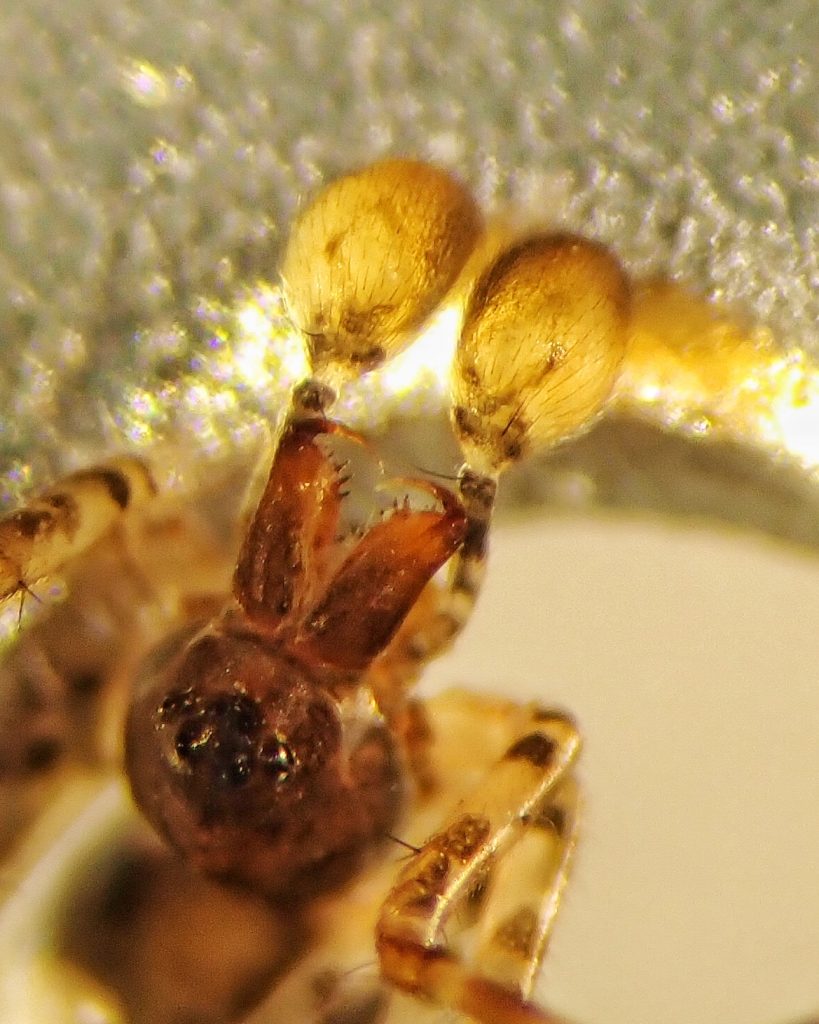
Habitat– Brushy forests and woodlands at low to mid elevations.
Range– Native to far western North America; in the PNW it appears to be found primarily west of the Cascades, and in sw Oregon/nw California. Observations · iNaturalist
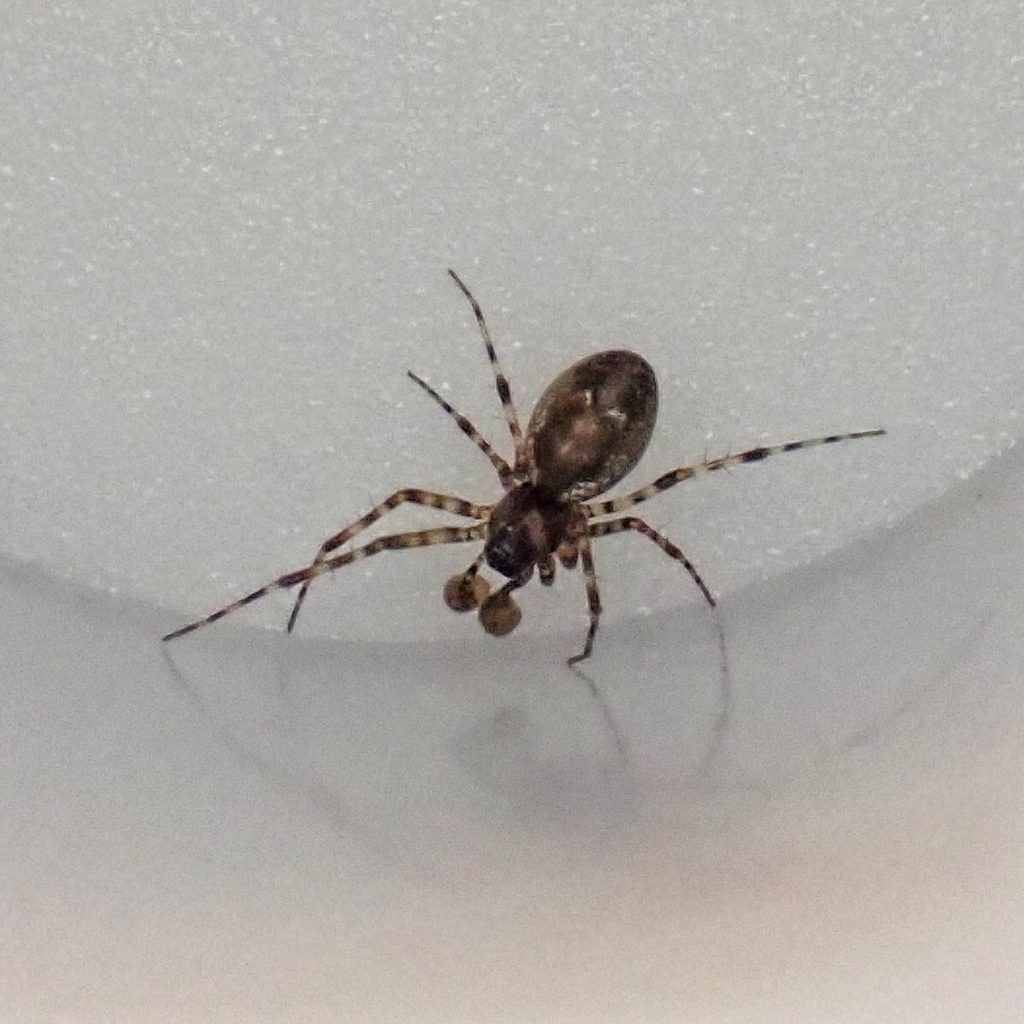
Eats– Known to feed on small Diptera and leafhoppers.
Eaten by– Presumably preyed upon by insectivores of all classes, and possibly parasitized by the larvae of pompilid wasps.
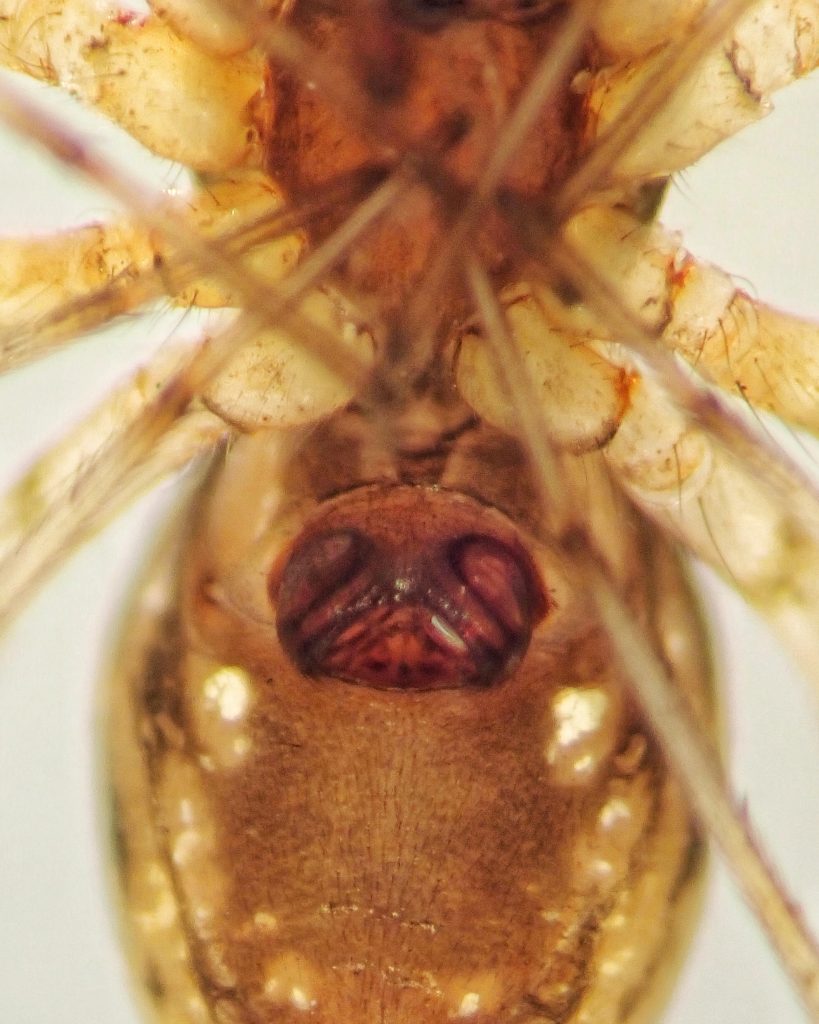
Adults active– From BugGuide and iNaturalist observations it seem these spiders can be found almost year around, and there appear to be adults about from April into December.
Life cycle– I can find nothing specific to this species.
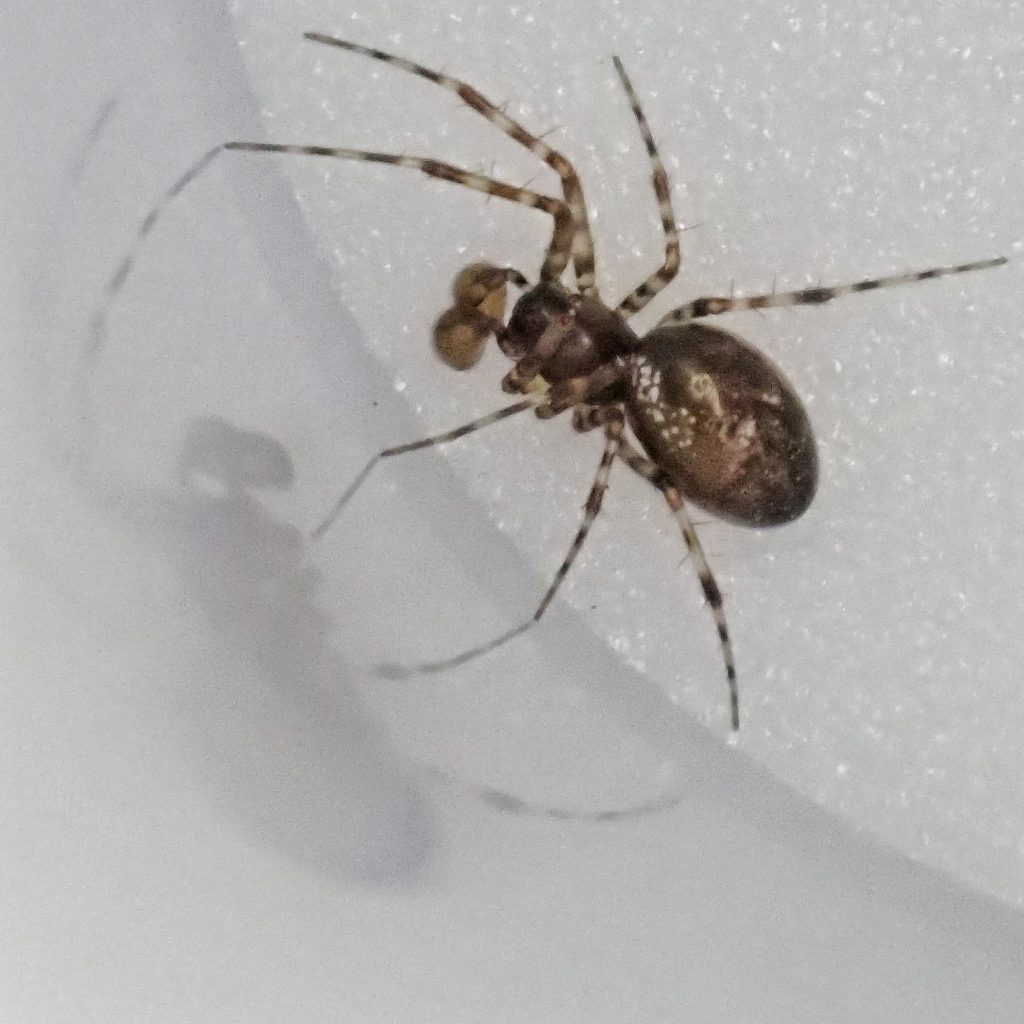
Etymology of names– Neriene was the wife of Mars in Roman mythology, and as a noun the word meant bravery, but Blackwall didn’t explain the reference. The specific epithet digna appears to be from the Latin word for ‘fit/worthy’, but Keyserling doesn’t tell us what was particularly worthy or fit about this spider.
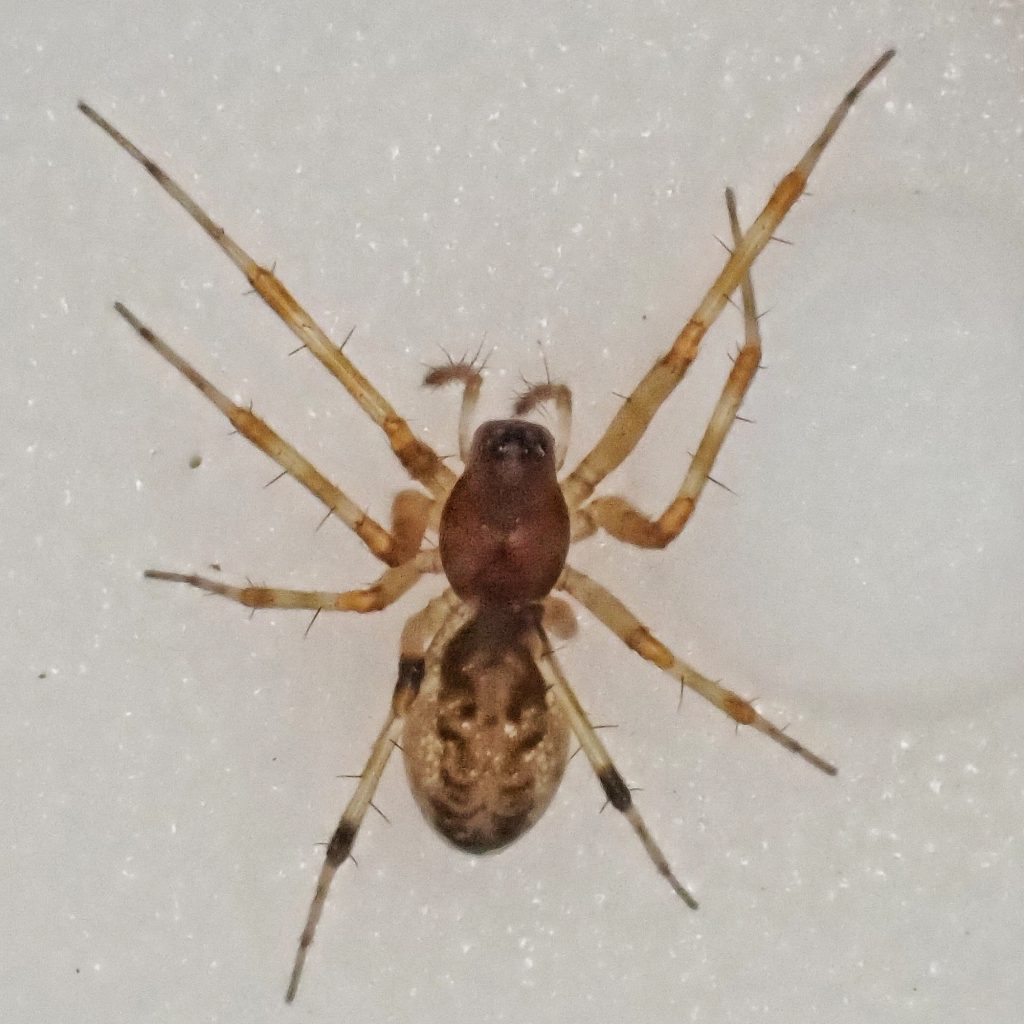
Species Neriene digna – BugGuide.Net
https://www.fs.usda.gov/pnw/pubs/pnw_gtr207.pdf
Sheet Web Spider, Neriene digna
Neriene digna (Neriene digna) – JungleDragon
